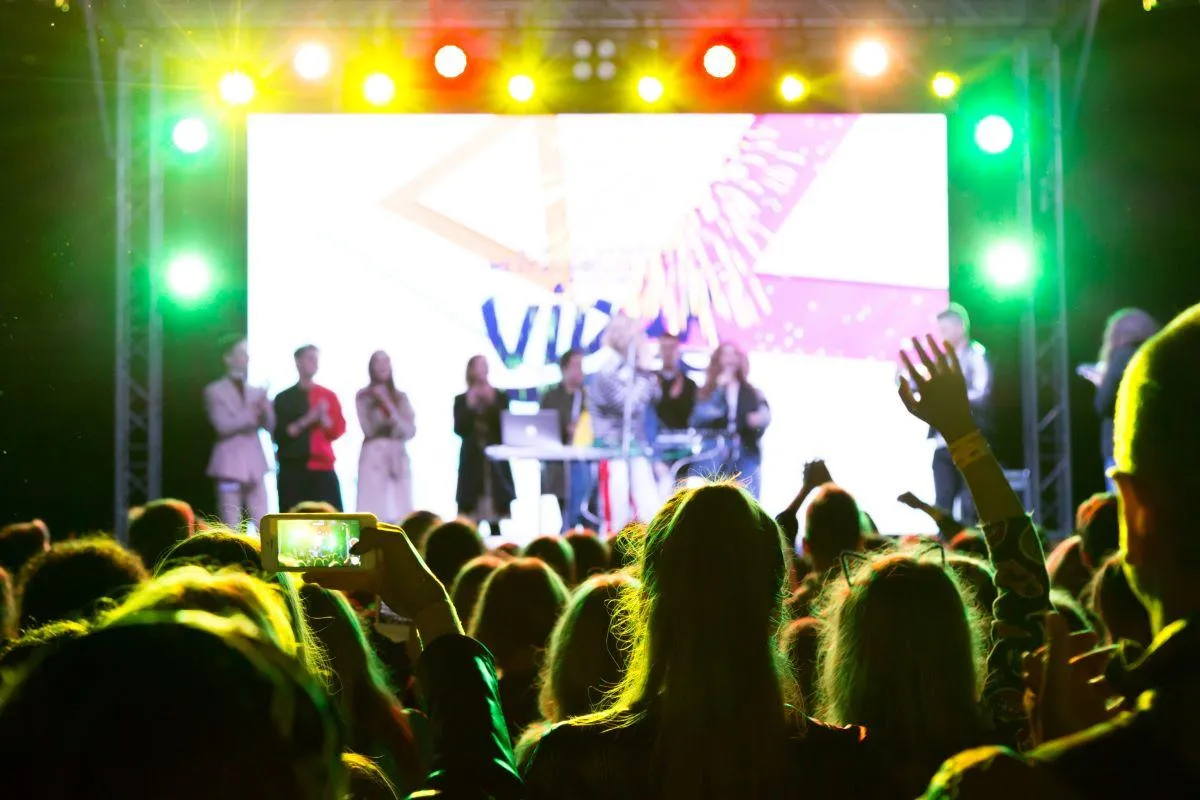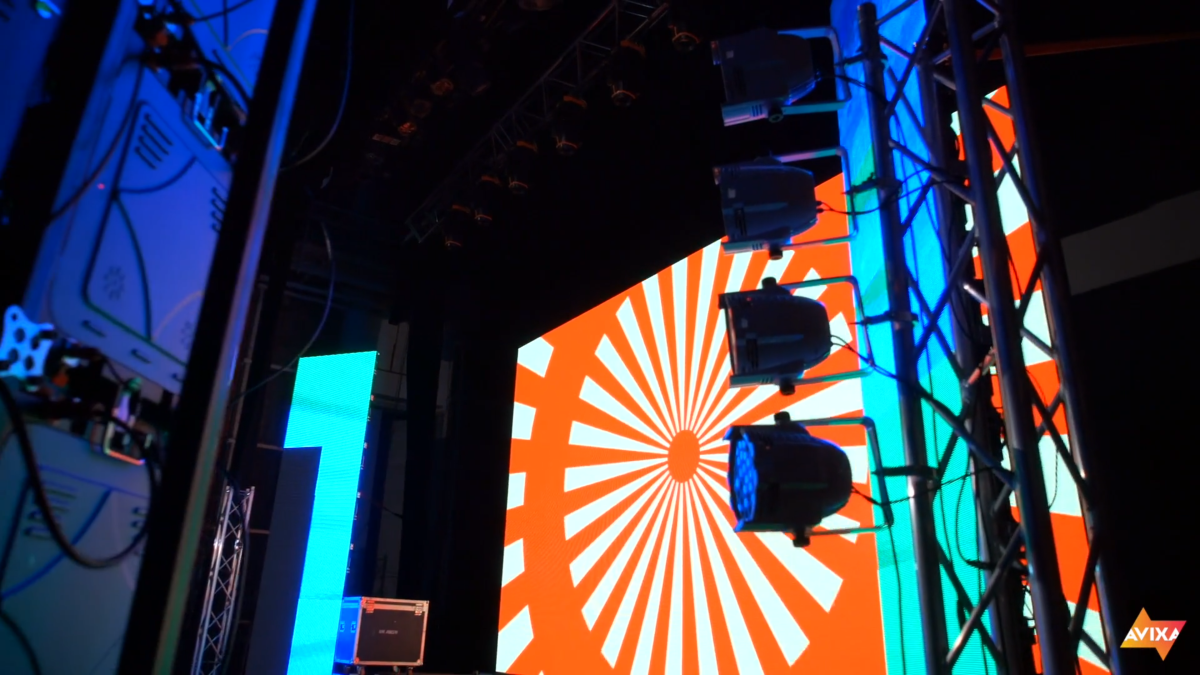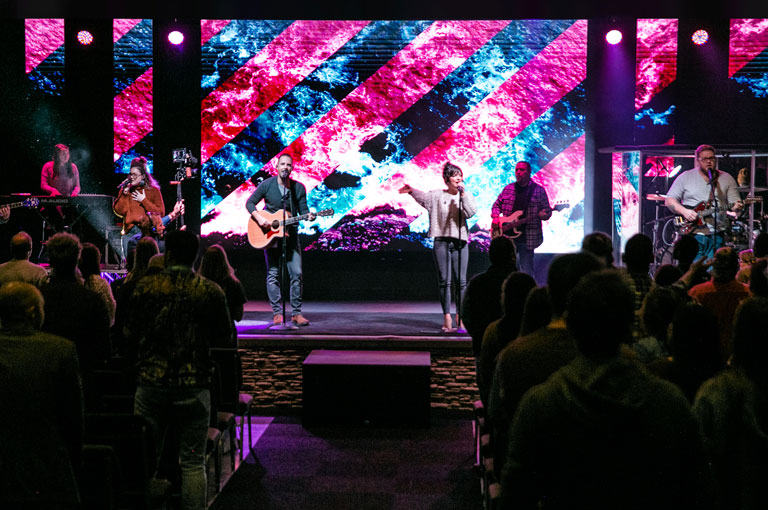
The Role of Technology in Event Management for Memorable Experiences
In the realm of event management, technology serves as a powerful tool to elevate live experiences and leave a lasting impact on attendees. By seamlessly integrating live event technology, organizers can create immersive environments that foster engagement, interaction, and effectively convey messages.
From large-scale conferences to intimate gatherings, the strategic use of audio-video solutions can transform the event landscape, offering many possibilities to enhance the overall event experience.
The Power of Live Events
Understanding the Impact of Live Events
Live events have the unique ability to bring people together in a shared space and time, creating a sense of community and collective experience that's hard to replicate through other mediums. They provide a platform for direct interaction, whether it's between a speaker and the audience, among attendees, or with the event's content itself. This direct engagement is crucial in making an event memorable and ensuring the key messages resonate long after the event has concluded.
Additionally, the tangible environment of a live event stimulates the senses in a way that virtual or static mediums cannot, leading to a more impactful and enduring impression. Technology in event management enhances these aspects by amplifying the natural benefits of live events, ensuring that every moment is engaging and every message is clear.
Types of Live Events
Live events span many types of formats, each tailored to meet specific objectives. Here are a few examples:
Conferences and Seminars: Provide invaluable knowledge-sharing and networking opportunities for professionals.
Trade Shows and Expos: Highlight cutting-edge industry innovations and developments.
Concerts and Festivals: Offer celebration of artistic expression, uniting individuals through cultural experiences.
Corporate Events: Vary from high-energy product launches to interactive team-building retreats, each with distinct objectives and audience engagement tactics.
The scope of live events is as diverse as the audiences they serve, and each type of event presents opportunities to leverage technology for enhanced experiences. By integrating live event technology, organizers can cater to the varied interests of attendees, ensuring that regardless of the event type, the technology is employed to captivate and deliver messages with precision.

Unleashing the Potential with Live Event Technology
Incorporating the right audio and video technologies is key to taking any event from average to extraordinary.
Immersive Sound Systems
High-quality sound systems are the cornerstone of auditory engagement, ensuring that whether it's the nuanced tones of a keynote speaker at a conference, the intricate harmonies of a live band at a festival, or the reactive sound effects in an interactive exhibit, every auditory detail is crystal-clear.
These sound systems are carefully calibrated to suit the acoustics of the event space and can include features such as directional audio beams and noise-cancellation technologies.
The goal is not merely audibility but an auditory experience that transports attendees to the heart of the event, resulting in a deep connection with the content being presented.
Engaging Video Technology
In the age of high engagement, video technology serves as a portal to visual storytelling, offering a versatile range of applications from expansive, high-definition displays that capture the smallest detail of a presentation to interactive screens that respond to user input. This technology encompasses live streaming services with adaptive bitrate streaming for seamless virtual attendance, ensuring a high-quality experience for attendees worldwide.
In essence, video technology acts as a visual orchestra, guiding the attendee’s gaze, amplifying key points, and facilitating a shared visual journey that strengthens the impact of the event's core messages.
Captivating Lighting
The strategic use of lighting transcends basic visibility, morphing ordinary spaces into captivating environments that evoke emotion and direct attention.
Through techniques such as dynamic spotlighting, mood-enhancing color changes, and synchronized light shows, lighting designers create a visual symphony that complements the event’s theme and rhythm. Intelligent lighting systems can react in real-time to changes in the event, such as audience applause or shifts in music, leading to a richer, more cohesive experience.
Well-executed lighting not only highlights the main attractions but also crafts subliminal pathways, guiding attendees through the event's narrative and leaving a lasting impression.
Enriching the Attendee Experience
Augmented and virtual reality technologies are redefining attendee engagement by offering an unprecedented level of immersion. An augmented reality overlay might bring static objects to life with interactive content, while virtual reality can transport attendees to entirely new worlds, from re-created historical scenes to futuristic landscapes.
Whether through wearable technology, mobile applications, or stand-alone installations, AR and VR create multisensory experiences that are memorable, personal, and deeply engaging. By weaving these elements into the fabric of an event, organizers can support more nuanced narratives, appeal to diverse learning styles, and ultimately bridge the gap between attendee and event content, fostering a profound sense of connection and wonder.
Real-life Instances of Technology in Event Management
Here are some real-life instances of technology used in live events:
Envision interactive touchscreens at a tech conference, allowing attendees to delve into topics on an individual level post-presentation, enriching their learning and engagement.
Picture a product launch transformed by 360-degree video projections, enveloping attendees in a captivating brand journey that extends beyond the confines of traditional media.
Imagine trade show stands coming alive with virtual reality demos, offering visitors an interactive, hands-on product experience far surpassing the limitations of static displays.
These real-world applications of technology in event management elevate the attendee experience, streamline event logistics, and leave indelible impressions, proving the impactful integration of audio-video innovations in live events.

Elevating the Event Experience with Technology
Immersive Environments and Interactive Engagement
Creating immersive environments with technology is about more than just visual or auditory stimulation; it's about creating an entire world that attendees can step into.
For instance, through the use of panoramic projections and spatial audio, a conference room can be transformed into a different scene, aligning with the theme of the event and enhancing the storytelling aspect.
Interactive engagement is another pillar of event technology. Engaging participants through interactive polls, Q&A sessions with digital platforms, and gamified experiences helps maintain high energy levels and fosters a sense of participation.
These tech-driven strategies ensure that attendees are not just passive spectators but active participants in the event narrative. As a result, they are more likely to retain information, feel connected to the brand or cause, and share their experiences with others.
Ensuring Clear and Compelling Messaging
The successful delivery of a message can be the deciding factor in an event's impact. Technology plays a crucial role in ensuring that this communication is not only clear but also compelling.
Advanced sound systems: Deliver crystal-clear audio to ensure every message reaches the audience distinctly, catering to any venue size.
Creative video content: Illustrates and strengthens key points, offering a dynamic complement to the spoken word.
High-resolution screens: Capture attendees' attention, rendering complex information accessible and engaging.
Thoughtful content design: Keeps the audience focused and promotes the understanding of intricate details and data.
Social media integration: Expands the message's reach beyond the venue, fostering remote participation and message amplification.
Integrated technology approach: Guarantees that the event's core message doesn't just echo in the space; it resonates with the attendees, moves them to action, and leaves a lasting imprint on their memories.
This technology-driven approach ensures that the core message resonates, sticks with the audience, and inspires action. When these elements work together, they guarantee that the message isn't just heard; it's experienced and remembered.
Transcending Expectations with Event Technology
The transformative power of technology in event management cannot be understated. By embracing live event technology, organizers can transcend traditional expectations and deliver experiences that are both memorable and impactful.
Whether it's through the crystal-clear sound of audio systems, the vivid imagery of high-definition video, or the immersive qualities of AR and VR, technology has the ability to captivate audiences and elevate the storytelling of any event.
For more information on how to make your live events a smashing success with state-of-the-art technology, don't hesitate to reach out to us at (205) 777-5626.

Quick Links
Sphere Audio Video | © 2024. All Rights Reserved
Site By Trustway Marketing
Powered by Kyrios Systems
